
Vision. The widespread use of traditional lawns across the United States has resulted in considerable environmental and economic costs, impacting both communities and natural ecosystems. This project explores these impacts and proposes sustainable landscape alternatives that address the changing cultural and ecological demands of modern society. By developing a comprehensive toolkit and using Wellington, Florida, as a test-case scenario, this thesis provides a pathway to transform American landscapes.
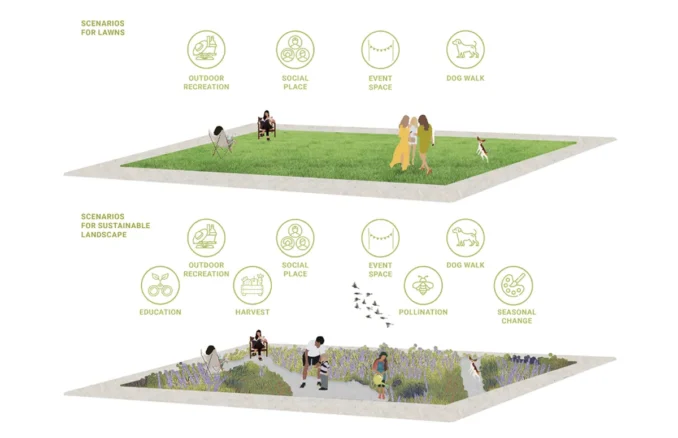
Environmental and Economic Costs of Lawns. Lawns incur substantial environmental and economic costs, largely due to their dependence on pesticides, herbicides, and chemical fertilizers, which contribute to pollution and biodiversity loss. They also require significant water resources for irrigation and produce emission for their maintenance and upkeep. These combined impacts lead to habitat destruction, health risks, and economic losses for communities.
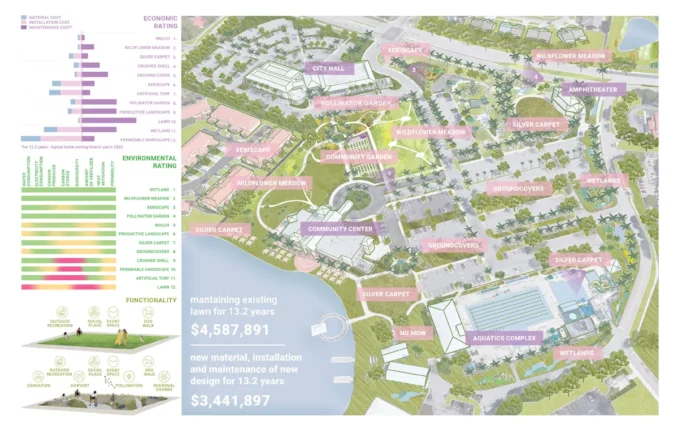
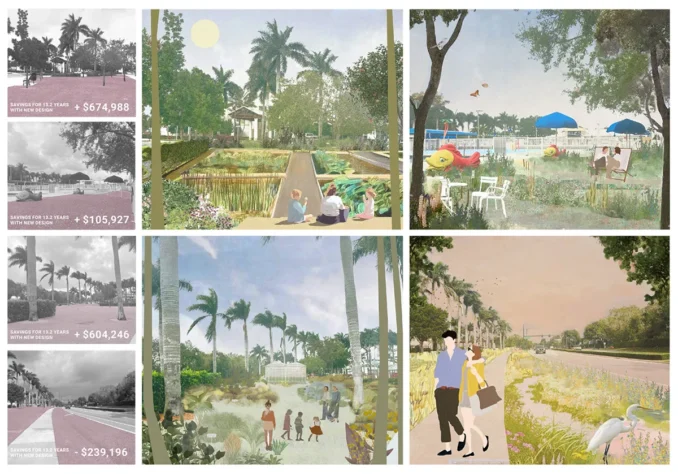
Cultural Significance and Changing Paradigms. The cultural significance of lawns has shifted over time, from symbols of prosperity for the upper and middle classes to standard, default features who’s permanence is enforced by Homeowners’ Association (HOA’s) rules and regulations. However, a new paradigm is emerging, where sustainable landscapes emblemize environmental consciousness and economic practicality. While lawns once served multifunctional purposes, sustainable landscapes offer similar benefits while supporting biodiversity, food production, and education. This project demonstrates how.

Comparative Analysis and Toolkit. A comparative analysis of lawns versus sustainable alternatives led to a toolkit with 12 landscape options. These options cover installation and maintenance costs, functional uses, and environmental impacts, such as water use, carbon storage, and biodiversity. Lawns were found to incur nearly seven times more maintenance costs and eight times more water usage than functionally-comparable sustainable landscapes over the average homeownership period (13.2 years) at a surplus cost of over 25% and none of the benefits.
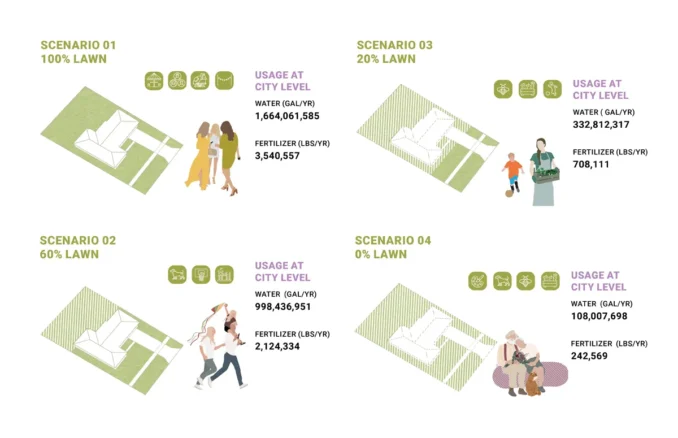
Wellington Community Center Test Case. The Wellington Community Center, located in a city where 40% of the total territory is lawns, served as a test case for developing landscape alternatives. The project replaced existing lawns with sustainable options from the toolkit while maintaining functionality. The redesign resulted in significant long-term cost savings for both installation and maintenance. The test case was expanded to evaluate the scalability of sustainable landscapes at residential and city-wide levels.
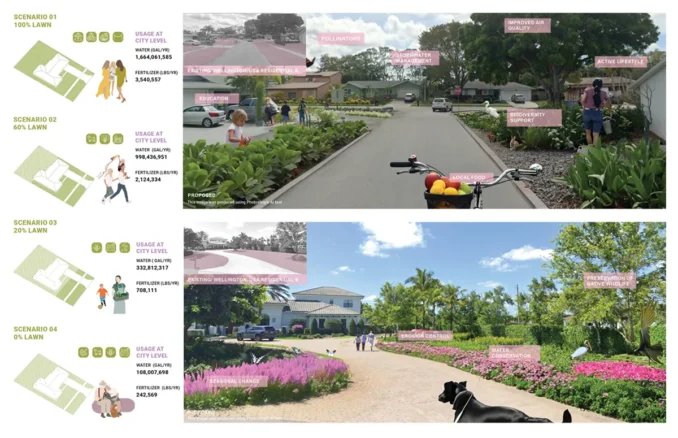
Implementation and Monitoring. An 8-step plan was developed to promote sustainable landscapes through education, code changes, and advocacy efforts, including with local communities, authorities, and environmental groups. Monitoring will include periodic assessments of environmental impacts, cost savings, and community engagement to ensure the success of sustainable alternatives.
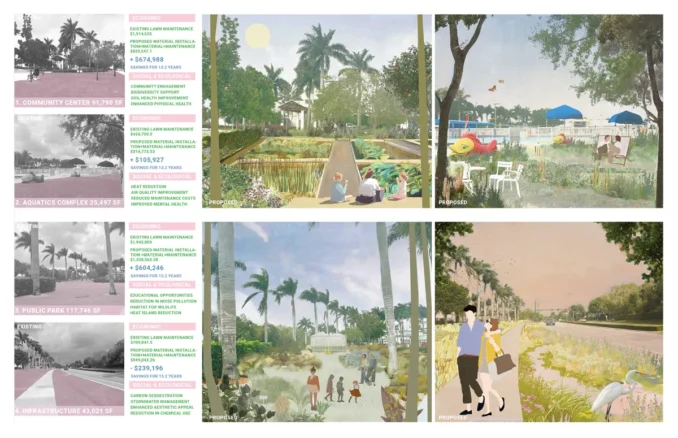
Conclusion. This project’s research, design, and toolkit provide a new perspective on the environmental and economic impacts of lawns. By promoting sustainable landscape alternatives, this analysis lays the groundwork for a paradigm shift in how American communities view and manage their outdoor spaces. With collaborative efforts, this vision for sustainable landscaping can lead to improved ecological health, community well-being, and substantial long-term cost and resource savings.
The Costly Truth About Lawns
Student: Valeriia Tolkacheva, Florida International University (FIU)
Advisor: Gianno Feoli, Florida International University (FIU)
Winner of the Merit Award in the Concept – Graduate Design category of the 2024 WLA Student Awards.

Be the first to comment